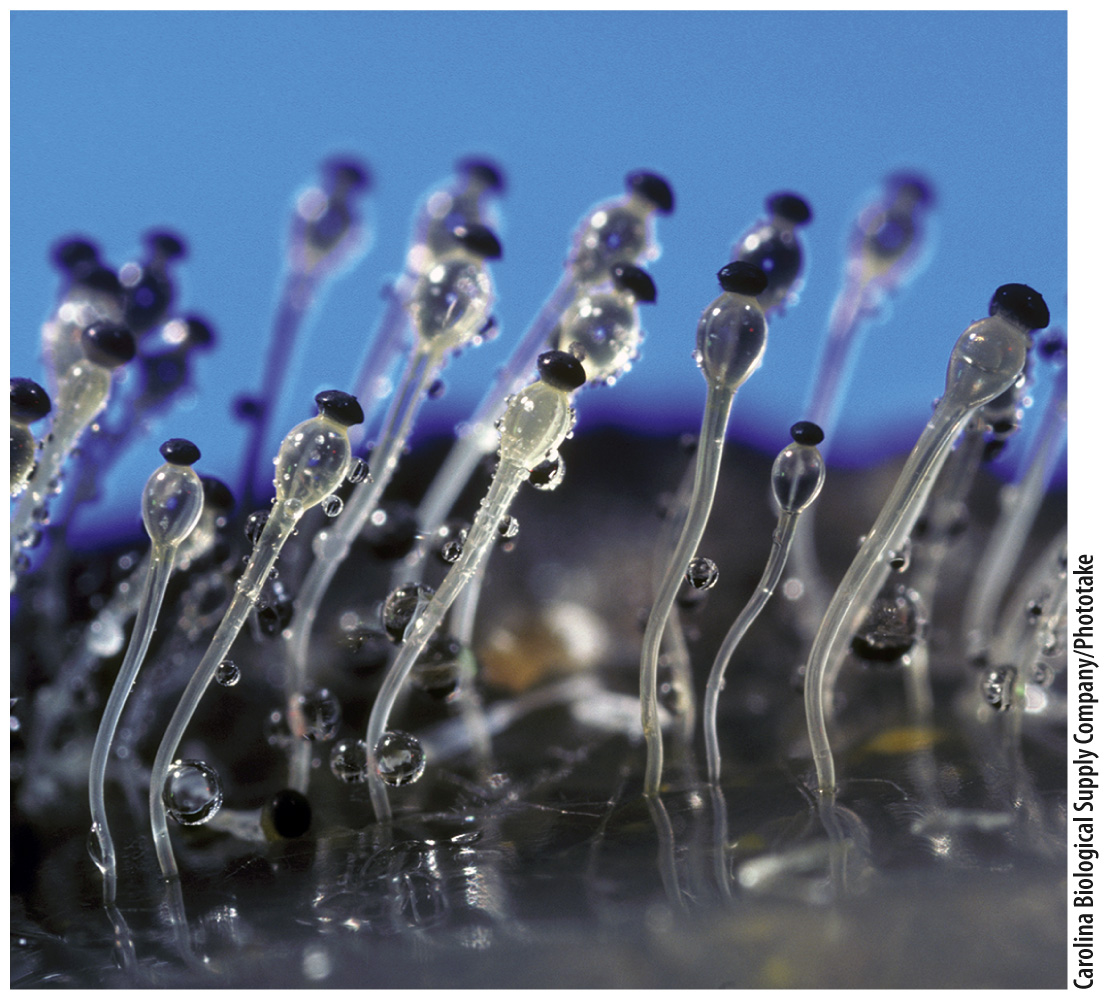Zygomycetes produce hyphae undivided by septa.
728
Moving through the phylogenetic tree, we next encounter several groups traditionally united as the Zygomycota, or zygomycetes (see Fig. 34.15). These groups share a number of traits.
Collectively, zygomycetes make up less than 1% of the known fungal species. Some are decomposers, specializing on dead leaves, animal feces, and food. There are probably zygomycetes in your kitchen. Others live on and in plants, animals, and even other fungi. Zygomycetes have many typical fungal traits, including the growth of a mycelium and the production of aerial spores. These traits may have evolved as adaptations for finding food and dispersing on land. The loss of flagellated spores may also reflect adaptation for life on land. Unlike more complex fungi, zygomycetes do not form regular septa along their hyphae, nor do they produce multicellular fruiting bodies.
Earlier, we introduced the black bread mold Rhizopus, which is a zygomycete (see Fig. 34.10b). Rhizopus and its relatives are specialists on substrates containing abundant, easy-
Sexual reproduction occurs when two compatible hyphal tips fuse to form a thick-
Although zygomycete fungi do not form multicellular fruiting bodies, some have evolved truly spectacular means of dispersal. Pilobilus, which consumes the dung of herbivorous animals, has a life cycle similar to Rhizopus except that, instead of releasing individual spores, it forcibly ejects the entire sporangium (Fig. 34.17). Turgor pressure generated in the supporting stalk propels the sporangia as far as 2 m. Light-
